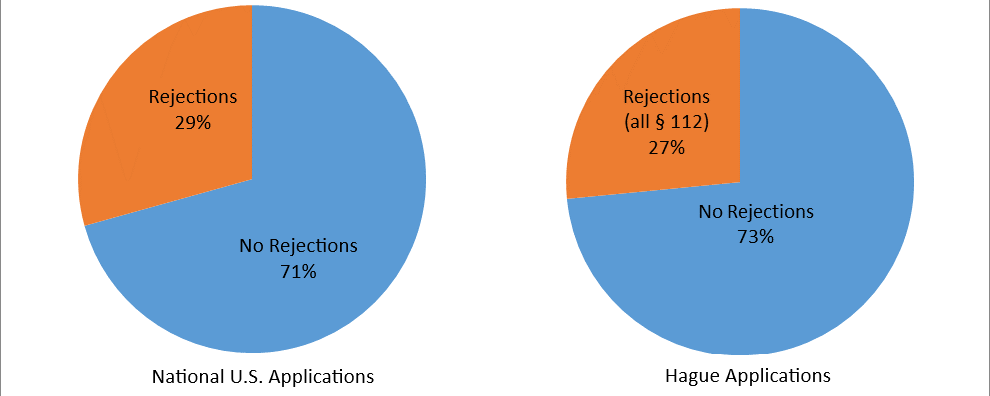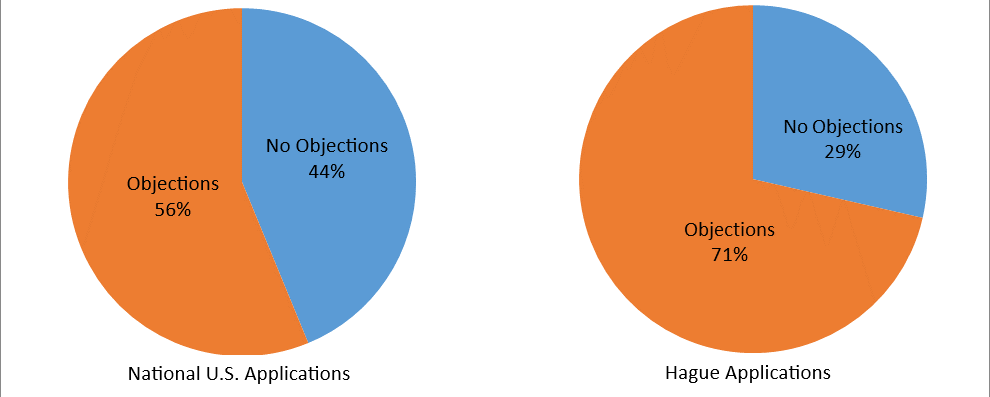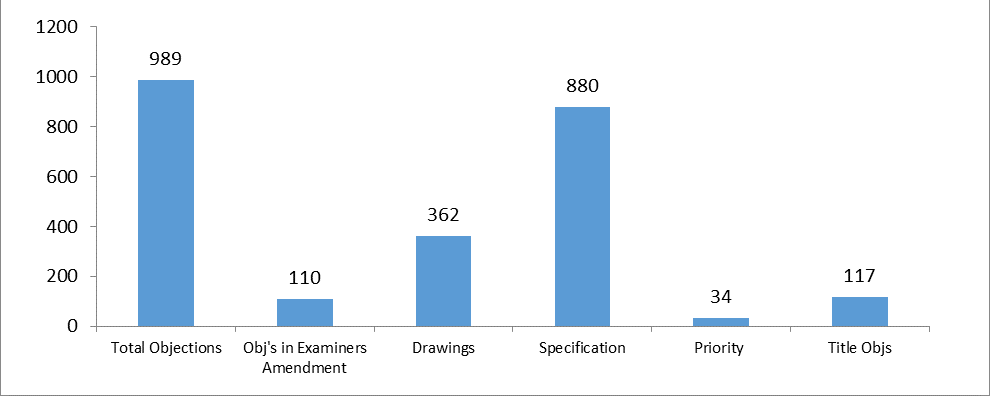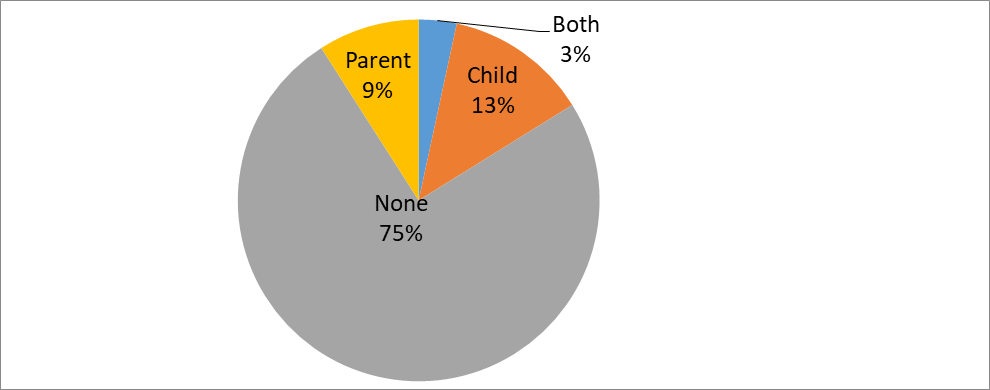Guest post by Dunstan H. Barnes[1]
To recap, today’s guest post is the second in a three-part series (read part 1 here) on Design Patent Rejections. In this second post, we will look at some of the other statistics collected while conducting this updated analysis, including similarities and differences between office actions received in Hague and national U.S. applications, the numbers of embodiments applicants are including in their design patent applications, continuity data, and a breakdown of Section 112 rejections. (In my third guest post, we plan to include USPTO data regarding abandoned design applications in an effort to get a better estimate of the true number of design patent applications that go “straight through” from filing to issuance without receiving any office actions.)
Objections and Rejections in National U.S. vs. Hague Design Applications
Based on our reviewed sample[2], and as shown below, the USPTO issues a similar number of rejections for U.S. National (directly filed in the US) design patent applications (29%) as compared to Hague applications (27%), but fewer objections for national U.S. applications (56%) as compared to Hague applications (71%). Although it is likely due in large part to the small sample size of 49 Hague applications, all 13 of the rejections received were Section 112 rejections.

Turning to the objections, it was interesting to observe that more applications received objections than did not (i.e., over 50%) in both national U.S. and Hague applications. One reason for the increased number of objections in Hague applications is likely that such applications are not necessarily prepared to comply with US design patent rules, so minor amendments must be made to bring the applications in line prior to issuance. Still, over half of the national U.S. applications also received objections that meant amendments were required prior to issuance.

In terms of a breakdown of the 989 different objections received, we broke the objections down into four broad categories: (1) objections to the drawings, (2) objections to the specification, (3) objections to the priority claim, and (4) objections to the title. In addition, we measured how many of the objections were addressed by examiner’s amendment (e.g., in a notice of allowance). The breakdown is reflected in the accompanying chart—note that the numbers of objections from each category do not add to 989 because a number of applications received more than one objection type. As shown, the majority of objections were to the specification or drawings, with fewer objections to the title or priority claim.

Number of Embodiments in Each Design Application
A design patent may only contain a single claim. However, an application may be filed with multiple embodiments, which will either be allowed to issue together (if the relevant embodiments are deemed to be patentably indistinct) or restricted out (if the relevant embodiments are deemed patentably distinct). In the current study, the majority of US design applications were filed with a single embodiment, but there were also numerous applications that included 2-4 embodiments. It was less common to file with 5-10 embodiments in a single application, and relatively rare for an application to have more than 10 embodiments. In the current study, only two applications comprised more than 100 embodiments: one with 156 and the other with a whopping 294 embodiments.

Continuity Data
As shown in the accompanying pie chart, three-quarters of design patent applications are standalone applications (i.e., not a parent or child of another application). In the current study, 13% of applications were a continuation, divisional, or continuation-in-part of another application, 9% were parent applications of another application, and 3% were both.

Breakdown of Section 112 Rejections
Finally, we look briefly at the breakdown of Section 112 rejections, which were the most frequent rejections observed in the present study (see the first post in this series here). Of 1,746 applications, 444 applications received at least one Section 112 rejection. The rejections are broken down in the accompanying chart. Almost every Section 112 rejection (430) involved an assertion that the claim was indefinite (for example, due to alleged inconsistencies between the drawings) and an almost equivalent amount (420) of Section 112 rejections were for lack of enablement (for example, stating that one of skill in the art couldn’t produce the claimed design based on the drawings), which is not a surprise given that these two rejections often go hand-in-hand. A fewer number of Section 112 rejections (61) were for lack of written description support (which could arise, for example, in a child application where the examiner felt that there was insufficient support for the present claim based on the disclosure of the parent application).

[1] As before, a big thank you to the following individuals: Christopher V. Carani and Philipp Ruben for their assistance in setting up the present study; Philip Brown, Amber Carpenter, Collin Hansen, Michael James, Donna Kwon, Alan Montera, Autumn Schmidt, and Sean Sparrow, who were each instrumental in collecting data for the present study—Sean, in particular, deserves a special mention for his tireless work digging into the statistical analysis (and re-reviewing in an effort to ensure the data are correct).
[2] The 1,746 design patents reviewed in the present study issued between October 17, 2017 and November 7, 2017, which included 49 applications filed under the Hague System for the International Registration of Industrial Designs (referred to in this post as “Hague applications”). More details about the Hague System can be found at https://www.wipo.int/hague/en/.

